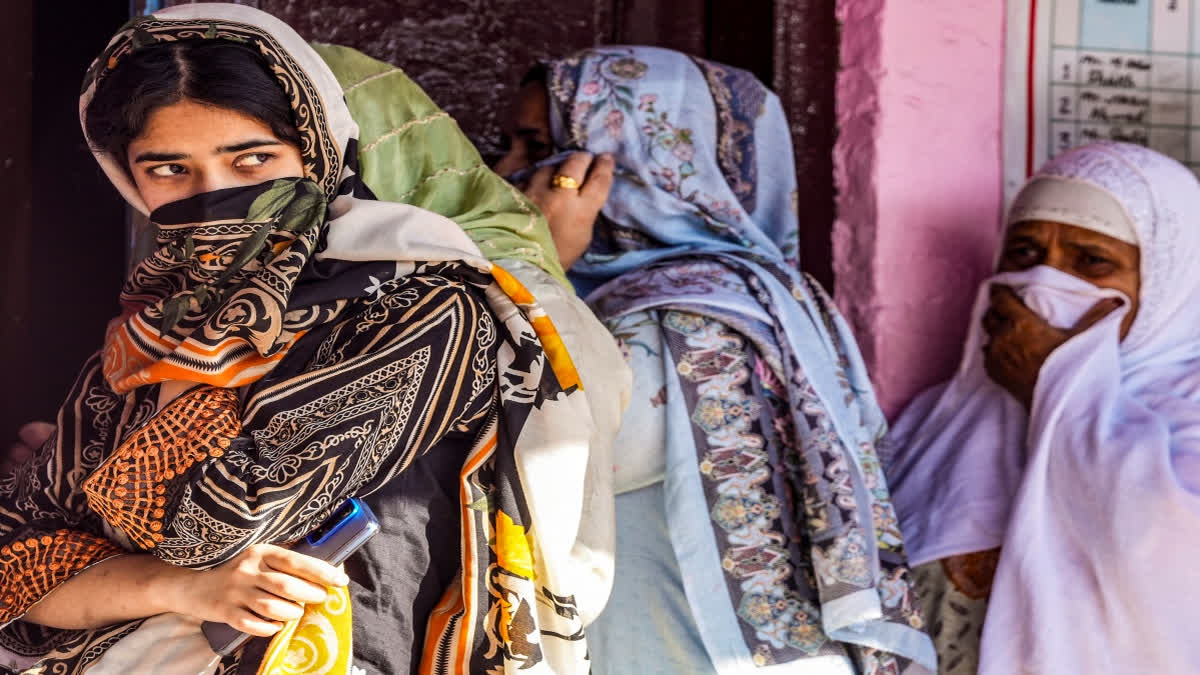Srinagar:The third and final phase of Jammu and Kashmir's (J&K) Assembly elections concluded on October 1, 2024, marking a pivotal electoral milestone after a decade-long hiatus. Conducted by the Election Commission of India (ECI), the extensive electoral process commenced with the announcement of the formal schedule on August 16, 2024.
The elections unfolded in three phases: the first phase, which covered 24 Assembly constituencies, was held on September 18; the second phase, encompassing 26 constituencies, took place on September 25; and the final phase, involving 40 constituencies, wrapped up on October 1.
According to ECI data, voter turnout in the first phase reached an impressive 61.38%, while the second phase saw a slightly lower turnout of 57.31%. Provisional figures for the final phase stand at 68.72%, leading to an overall voter turnout of 63.45% for the J&K Assembly elections in 2024.
Voter Turnout: 2008, 2014, and 2024
An analysis of voter turnout across multiple elections in Jammu and Kashmir highlights significant shifts in political sentiment and engagement in this sensitive region. The Assembly elections of 2008 witnessed a voter turnout of 61.01%, which saw an upward trend in 2014 with a notable increase to 65.84%. This positive trajectory, however, faced a setback in the 2024 Lok Sabha elections, where voter turnout declined to 57.89%.
Interestingly, the 2024 Assembly elections provisionally recorded a turnout of 63.45%, reflecting a slight drop from the peak in 2014 but demonstrating improved voter engagement compared to the earlier Lok Sabha elections.
In the just concluded Assembly elections in Jammu and Kashmir, the voter turnout exhibited striking contrasts across the 20 districts. The Jammu Division saw a robust average voter turnout of 72.59%, while the Kashmir Division lagged significantly behind at 55.20%. This notable disparity highlights the differing political engagement levels among the regions, underscoring the complexities of the electoral landscape in Jammu and Kashmir.
Starting with the Kashmir Division, the district of Kupwara exhibited a voter turnout of 65.81% in the 2024 elections. This figure, while lower than its 71.48% turnout in the 2014 Assembly elections, signifies a robust engagement compared to the 63.43% seen in the Lok Sabha elections earlier this year. Baramulla recorded a voter turnout of 59.84%, indicating an increase from 57.29% in 2014. This reflects strong voter engagement, especially in contrast to the 54.49% turnout observed during the Lok Sabha elections in 2024. Bandipora achieved a turnout of 67.57%, significantly improving from 74.37% in the last Assembly elections but still higher than the 60.33% during the Lok Sabha elections.
Ganderbal reported a turnout of 62.83%, up from 66.92% in 2014, while Srinagar remained the lowest in the division with a turnout of just 30.08%, improving from 27.75% in 2014 and 21.57% in 2008. Budgam recorded a turnout of 63.28%, reflecting a solid turnout compared to 73.00% in 2014. Meanwhile, Pulwama showed a modest increase to 46.99%, slightly higher than its turnout of 44.08% in the previous Assembly elections. Shopian experienced a significant rise to 57.01%, up from 48.40% in 2014, while Kulgam also demonstrated strong engagement with a turnout of 63.14%, a considerable increase from 59.53% in 2014. Anantnag saw a turnout of 57.90%, slightly above the 60.60% recorded in 2014.
Overall, the Kashmir Division had an average voter turnout of 55.20% in the 2024 Assembly elections, reflecting a rebound compared to the 47.27% turnout seen in the Lok Sabha elections.
In stark contrast, the Jammu Division exhibited consistently high voter engagement. The district of Kishtwar led with a remarkable turnout of 80.20%, an increase from 76.03% in 2014. Doda followed closely with a turnout of 71.32%, slightly lower than its previous 73.92%. Ramban reported a turnout of 70.57%, improving from 70.95% in 2014. Reasi maintained a strong voter base with a turnout of 74.68%, showing stability compared to its 81.38% in 2014. Udhampur also demonstrated solid engagement at 75.87%, up from 76.89% previously.
